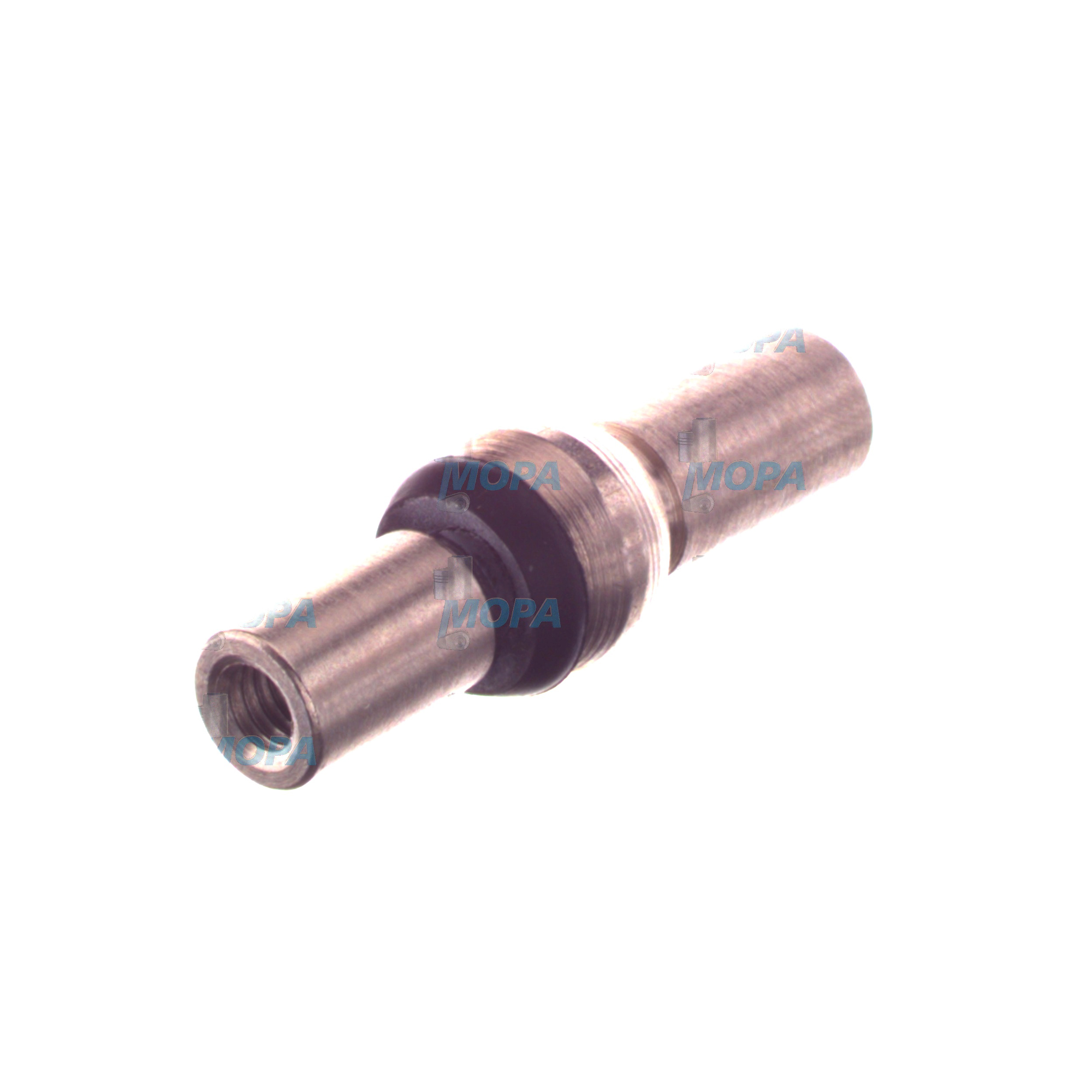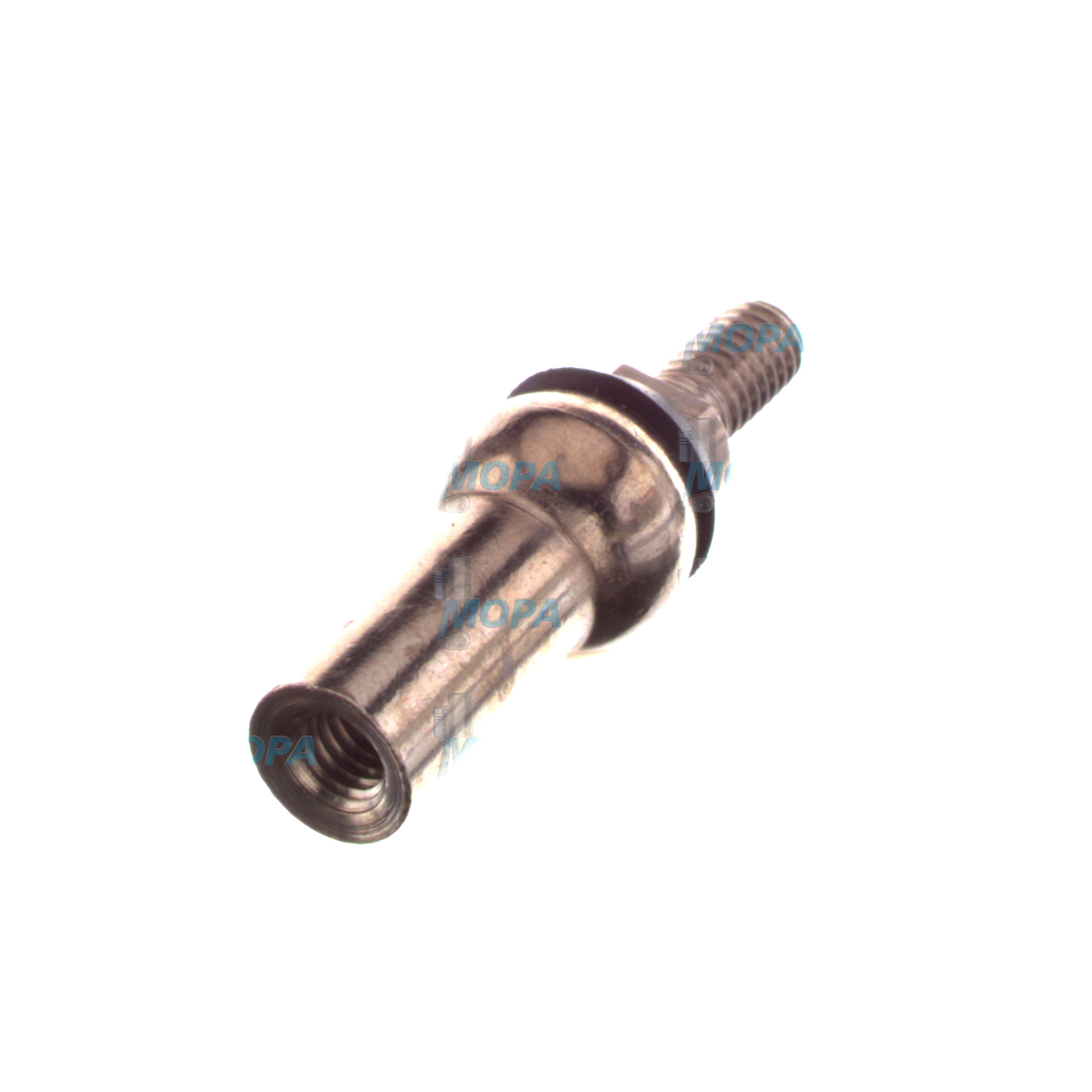AXIAL JOINT – Connecting elements for marine and diesel engines
Connecting elements are the silent backbone of every engine assembly. From cylinder head studs and main-bearing cap bolts to exhaust flange fasteners, clamps, pins, couplings, and specialized joints, they unite critical components into a single, stable system. In heavy-duty diesel and gas engines—especially in marine applications—these parts uphold structural integrity, maintain sealing forces, and sustain precise alignment under extreme temperature gradients and high cyclic loads. Within this category, interfaces such as an AXIAL JOINT in exhaust or charge-air lines add controlled flexibility, absorbing thermal growth and vibration while preserving tightness and alignment.
Because engines operate in a harsh combination of pressure pulsations, torsional oscillations, and corrosive environments, connecting elements must deliver consistent preload, resist relaxation, and prevent micromovements that cause fretting and fatigue. Material selection, surface treatment, thread geometry, and tightening methods all determine whether an engine holds its performance over thousands of operating hours or drifts into inefficiency and unplanned downtime.
Technical function of connecting elements with AXIAL JOINT interfaces
At a fundamental level, connecting elements convert tightening input (torque or tension) into a defined clamping force. This preload unites mating parts so that service loads are carried by friction at the joint, not by the fastener shank alone. In a diesel engine, correctly tensioned cylinder head studs maintain combustion sealing; bearing cap bolts preserve crankshaft alignment; turbocharger and manifold fasteners hold gaskets under high temperature and pulsation. In parallel, an AXIAL JOINT component used in a marine engine exhaust run compensates axial expansion and minor misalignment, protecting flanges and preventing overstress of rigid pipe connections.
Performance, efficiency, and safety depend on the precision of these functions. The friction factor of threads and bearing surfaces (often managed via specified lubrication), the use of torque-angle or hydraulic tensioning, and the choice of fastener class (e.g., ISO 898-1 10.9/12.9 or ASTM A193 B7/B16) ensure repeatable preload. Coatings such as zinc-nickel, phosphating, or MoS2-based dry films stabilize friction and bolster corrosion resistance. On the flexible connection side, an AXIAL JOINT diesel engine configuration—in the form of a bellows-type axial expansion joint—must match pressure rating, temperature window, spring rate, and end connections to avoid flow-induced vibration and premature fatigue.
- · High preload stability for reliable sealing and alignment.
- · Resistance to vibration, thermal cycling, and corrosion.
- · Precision fit and thread integrity to reduce loosening.
- · AXIAL compensation and misalignment control where needed.
- · Material grades matched to load and temperature profiles.
- · Predictable tightening behavior (torque-angle or tensioning).
- · Traceability and compliance with engine maker specifications.
- · Service-friendly design for efficient overhauls.
In practical terms, correct connecting elements minimize blow-by at the head gasket, keep turbochargers leak-free, prevent flange warping, and mitigate acoustic and vibration issues that erode efficiency. For piping, an AXIAL JOINT marine engine installation absorbs hull and thermal movements, reducing stress concentrations in rigid spools and safeguarding instrumentation and supports.
Why connecting elements are critical for engine reliability and life
Loss of preload is the root cause of many failures. If a fastener relaxes—through embedment, creep, corrosion, or insufficient tightening—gasket loads decline, leading to leaks, hot gas erosion, and local overheating. Misaligned bearing caps can change oil film behavior, accelerating wear. Unrestrained micromovement fosters fretting corrosion and notch effects that drive fatigue cracks. On the piping side, missing or misapplied AXIAL JOINT components increase loads on flanges and welds, inviting cracks and unplanned shutdowns.
Conversely, when connecting elements maintain their design clamping force and flex joints are correctly sized, engines hold calibration longer, consume less fuel, and remain safer to operate. The result is fewer corrective interventions, extended service intervals, and predictable lifecycle costs.
Advantages of OEM spare parts suitable for connecting elements
OEM spare parts suitable for connecting elements are engineered and validated to the load case and interface geometry of the engine. That means thread classes match mating parts, head geometries clear surrounding components, and coatings are chosen for the specific environment—salt-laden marine air, hot exhaust streams, or chemical exposure in auxiliary systems. Metallurgy and heat treatment deliver the required proof load and toughness, enabling repeatable tightening without yielding or thread galling.
Beyond performance consistency, these parts also streamline procurement and maintenance. Lot traceability, dimensional conformity, and documented tightening specifications reduce risk during overhauls and support classification and audit requirements. In complex layouts—such as turbocharger casings, charge-air coolers, or exhaust compensators—AXIAL JOINT OEM parts are matched to the engine builder’s spring-rate envelope and flange pattern, avoiding over-stiff or under-stiff connections that can shift resonances into dangerous ranges.
Engineering notes for AXIAL JOINT OEM parts in diesel and gas engines
When specifying an AXIAL JOINT component, focus on pressure class, allowable axial travel, bellows ply count, effective area, temperature rating, and corrosion resistance (e.g., austenitic stainless or Inconel grades for hot sections). End connections (weld ends, flanges, or clamps) must align with engine and shipyard standards. Correct selection keeps flange forces within safe limits during thermal transients and heavy seas, protecting nearby equipment such as sensors, silencers, and SCR/EGC modules.
MOPA – your partner for OEM spare parts connecting elements and AXIAL JOINT solutions
MOPA is an experienced, reliable partner for OEM spare parts connecting elements across diesel and gas engines. The focus is on speed, quality, and security in the trade of OEM parts: fast response to RFQs, technically sound selections aligned with engine maker specifications, and secure, documented deliveries worldwide. From high-strength studs and nuts to clamps, dowels, and AXIAL JOINT components for marine engine exhaust and charge-air systems, MOPA supports planned maintenance and urgent dockside repairs alike with precise parts and clear technical data.
Conclusion
Connecting elements keep engines sealed, aligned, and safe, while AXIAL JOINT interfaces add the controlled flexibility required in hot, vibrating systems. Selecting OEM spare parts suitable for connecting elements protects performance, reduces risk, and extends service life—on every voyage and through every duty cycle.



